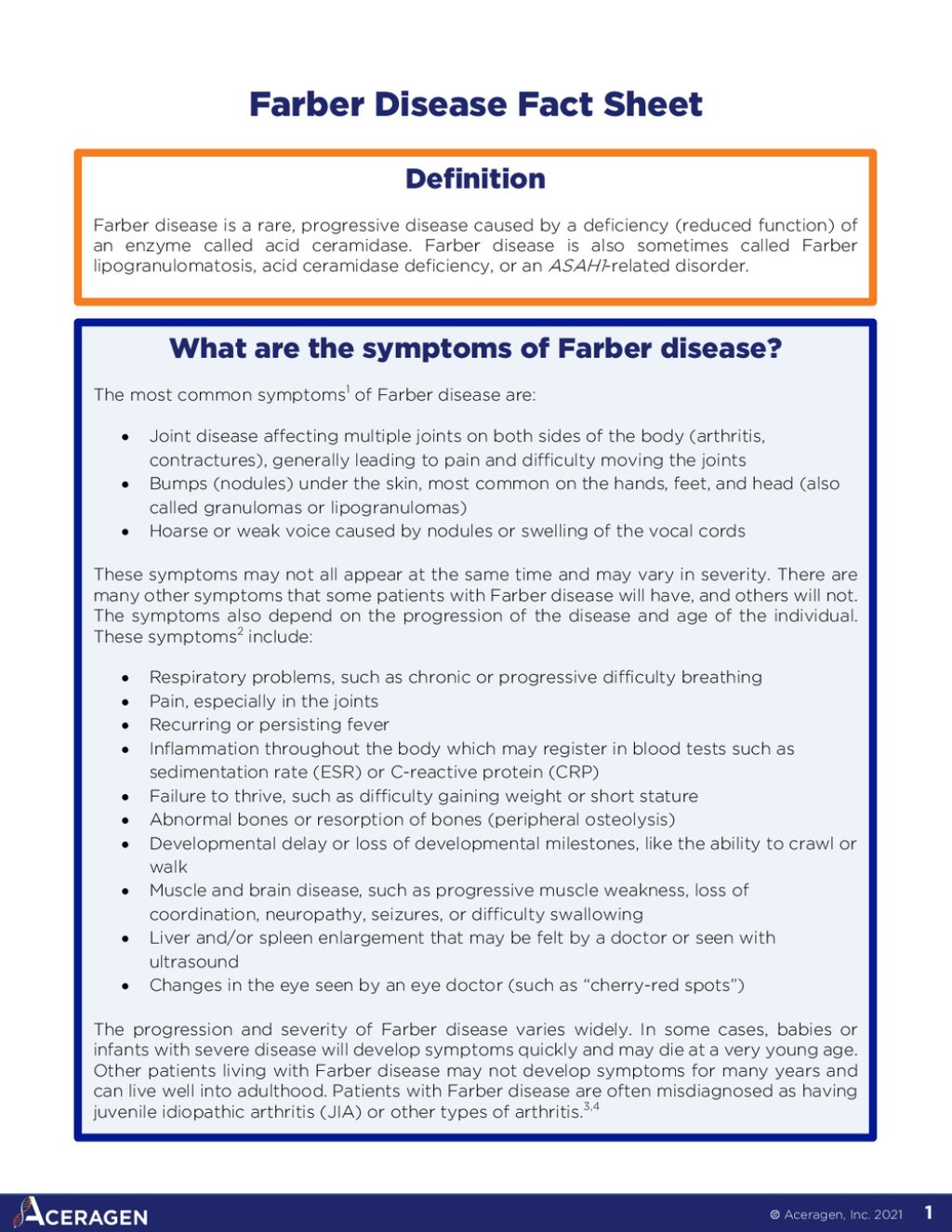What are the symptoms of Farber disease?
The most common symptoms of Farber disease are:
Joint disease affecting multiple joints on both sides of the body (arthritis, contractures), generally leading to pain and difficulty moving the joints.
Bumps (nodules) under the skin, most common on the hands, feet, and head (also called granulomas or lipogranulomas).
Hoarse or weak voice caused by nodules or swelling of the vocal cords
These symptoms may not all appear at the same time and may vary in severity. There are many other symptoms that some patients with Farber disease will have, and others will not.
The symptoms also depend on the progression of the disease and age of the individual. These symptoms include:
Respiratory problems, such as chronic or progressive difficulty breathing.
Pain, especially in the joints.
Recurring or persisting fever.
Inflammation throughout the body which may register in blood tests such as sedimentation rate (ESR) or C-reactive protein (CRP).
Failure to thrive, such as difficulty gaining weight or short stature.
Abnormal bones or resorption of bones (peripheral osteolysis).
Developmental delay or loss of developmental milestones, like the ability to crawl or walk.
Muscle and brain disease, such as progressive muscle weakness, loss of coordination, neuropathy, seizures, or difficulty swallowing.
Liver and/or spleen enlargement that may be felt by a doctor or seen with ultrasound.
Changes in the eye seen by an eye doctor (such as “cherry-red spots”)
The progression and severity of Farber disease varies widely. In some cases, babies or infants with severe disease will develop symptoms quickly and may die at a very young age.
Other patients living with Farber disease may not develop symptoms for many years and can live well into adulthood. Patients with Farber disease are often misdiagnosed as having juvenile idiopathic arthritis (JIA) or other types of arthritis.





